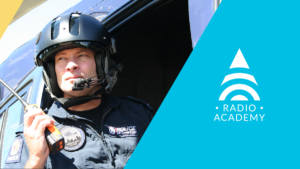The Tait Radio Academy is a free online resource of simple to understand educational material, covering a plethora of topics within the critical communications field. Today we look at a collection of educational resources for Public Safety agency radio operators.
Best Practice for Radio Users
Running your equipment correctly is the first step to becoming an efficient radio user. The aim for all radio operators should be to get the message through with complete accuracy and minimum delay; while avoiding occupying frequency that may prevent other users from communicating when they need it most.
Procedure words are standard, easily pronounced words which have been assigned special meanings to speed up messages handling on radio networks. They should be used whenever appropriate.
Learn Best Practice for Radio Users
What about P25?
P25 is the leading technology choice for Public Safety agencies and other mission critical organizations around the world; it connects life saving services to one another.
P25 is designed to meet a wide range of Public Safety operational requirements. There are two elements that should be considered for a radio to operate successfully: coverage and capacity. Coverage is the area over which people need to communicate and capacity is the number of simultaneous calls systems can handle. Public safety comms networks NEED vast coverage and capacity to handle the regular demand of the network and to operate under extreme conditions in the event of an emergency or natural disaster.
The architecture that makes up a P25 Network is intricate and varies between Public Safety Agencies like Law Enforcement, Fire Services, and Emergency Medical Services.
Get an Introduction to P25
Benefits of Broadband and Convergence for Law Enforcement
Group calls are critical for public safety. Broadband and Convergence takes this to a new level by making it possible to create groups spanning multiple technologies and devices.
With Broadband and Convergence, officers can take advantage of broadband access without giving up their trusted LMR radio they are used to. Real-time geolocation, fast polling, bodycam video, maps and images are available on demand. Officers can also access license plate reading, warrant and arrest database queries that can be exchanged with HQ; all from inside (or outside) the police car.
Broadband access can also enhance situational awareness by putting law enforcement applications in the hands of frontline officers while tracking officers in real time as they travel through specific locations.
In effect, Broadband and Convergence turns each officer or police vehicle into a kind of communications hub.
Learn more about the benefits of Broadband and Convergence for Law Enforcement on Tait Radio Academy.
Benefits of Broadband and Convergence for Fire Services
Fireground communications in ways that are similar to the Broadband and Convergence benefits derived by Law Enforcement. Multi-device talk groups, automated asset tracking. All of these functions come together to keep everybody connected and better informed.
Where Fire Services differs is that fire events drive a different structure of communications. Fire communications are quiet until a fire is reported. Broadband and Convergence means that fire commanders and personnel do not lose precious time fighting technology rather than fires.
With Broadband and Convergence, a command post vehicle can become a communications hub or vehicle area network, combining and coordinating the communications of multiple types and devices, interoperating with EMS and other services.
Learn more about the benefits of Broadband and Convergence for Fire Services on Tait Radio Academy.
Benefits of Broadband and Convergence for Emergency Medical Services
Ambulance and Emergency Medical Services (EMS) see their mission changing from the transportation of patients to hospitals for emergency medical care, to delivering more advanced medical care directly to patients.
By combining, enhancing, and unifying the management of technologies currently used in ambulances – radio, mobile data terminals, tablets, smartphones – Broadband and Convergence allows paramedics, who are already working under stress, to focus on ambulance patients rather than communications equipment.
A single device can be enabled on multiple talk paths like LMR, LTE, WIFI or satellite – Broadband and Convergence can reduce the number of different communications devices that need to be in the ambulance; alongside keeping paramedics handsfree.
Ambulances therefore become a key component in a coordinated first response operation.
Learn more about the benefits of Broadband and Convergence for Emergency Medical Services on Tait Radio Academy.
![]() Register for the Tait Radio Academy for free, to track your training online and gain access to all of the study materials.
Register for the Tait Radio Academy for free, to track your training online and gain access to all of the study materials.
Have a question or query? Contact us.




